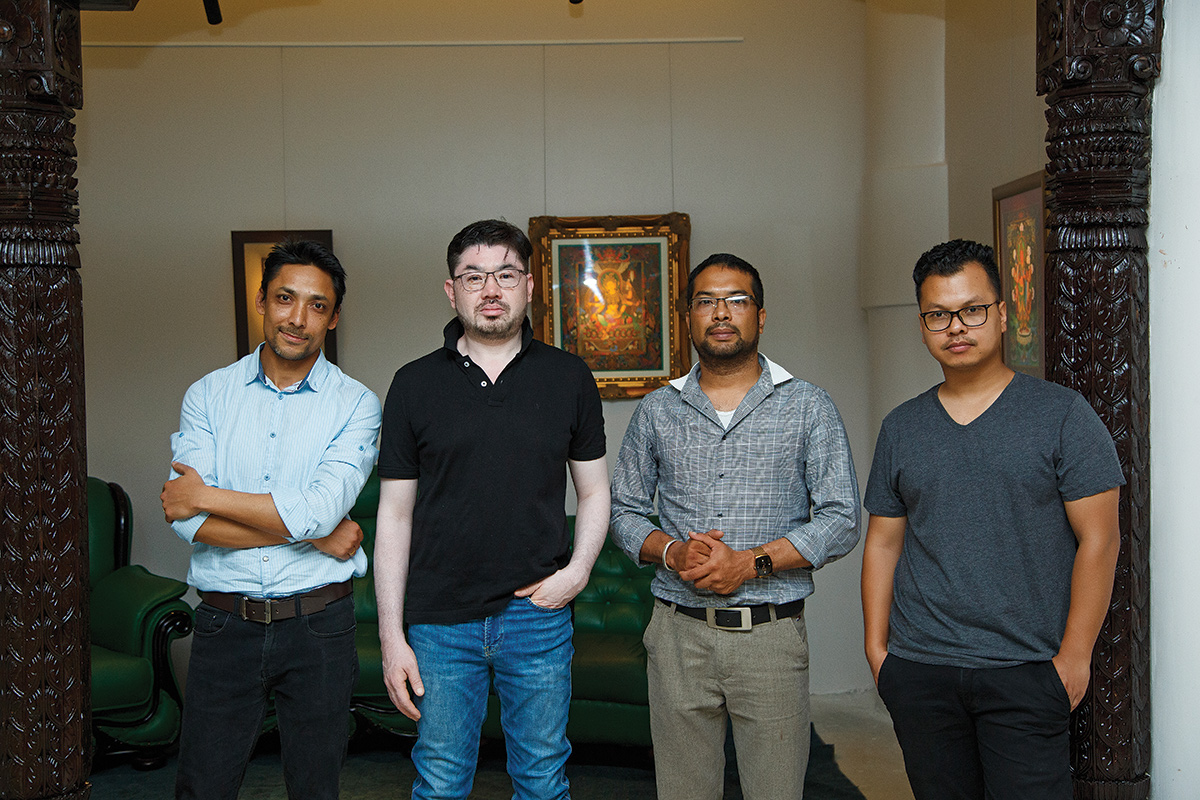
In the imposing scale of the current events, art may seem unimportant but it has the ability to heal and give hope. Museum of Nepali Arts (MONA) was originally set to launch on February 2 on the premises of Kathmandu Guest House in Thamel. According to the description on the museum’s webpage, it aims to revive traditional art, give freedom to neo-traditional art and explore inventiveness in contemporary art though realisation. But in the time of the pandemic an uncertain future lies ahead for the local art scene that might take months or years to come back to normality. However with the core aim to expand knowledge, interest and awareness around this discipline, MONA aims to showcase the traditional and contemporary works of the past and present master artists and have turned to virtual platforms to engage audiences at this time.
Inspiration
Rajan Sakya, CEO of KGH Group of Hotels, Resorts & Travel and the Director of MONA, believes that Nepali art can be dated back to 1500 to 2000 years. “I believe before any of the modern civilisations were born, we started working on the most complicated art,” he states. However, Nepali art, which has such rich history, is in danger of fading away in an increasingly fast changing world. Most of the great works of Nepali art have been denied a wider audience, and MONA aims to break this restrictive barrier. According to Sakya, “MONA was conceived about two years ago. It was essential to take the initiative and dedicate a small museum to Nepali arts. Art is important because it is our identity. If you look at what differentiates us Nepali from other people in the world is our culture and our heritage. We are Nepali because we follow a certain tradition, we follow a certain religion, and our way of life makes us different from any other people in the world. But it is equally important to understand that the seed of our culture and heritage is actually art.”The Need to Promote and Preserve Nepali Art
The tourism sector mainly focuses on promoting mountains and countless religious sites and temples. Art, on the other hand, remains untouched. This trend, according to Sakya, attributes to the lack of promotion about the local arts and the artists. As a result there are not enough platforms dedicated to showcase or to promote Nepali arts. One of MONA’s ambitions is to become a platform where people from different generations can come together to appreciate the Nepali arts. Plus, the underlining vision is to become one of the places a tourist must visit when they come to Nepal. With their collections of masterpieces, it is clear that they are moving in the right direction. Sakya explains, “Nepal is home to artists whose works are in demand in art museums and galleries around the world; however we rarely know about these bodies of work let alone be able to see and appreciate these arts. In order to increase that appreciation, among the newer and young generations, and to increase their pride we created this platform. So this museum is to encourage, motivate and to make every Nepali proud of our culture, heritage and identity. This was the main reason that we established the museum.”According to Sakya as much as 99% of art buyers are foreigners. Needless to say, one of the best ways that local art can gain momentum and raise the art economy is by Nepali people investing in art.Preservation of the arts is a massive undertaking for a country which is as culturally unique as Nepal, MONA is a step in that direction. Intricately detailed Nepali arts have not gained the same reputation as for example Barnett Newman solitary blue-lined art piece that fetches millions in the international scene, but Sakya believes that Nepali art can have the same reputation. He says, “Art is something that can be collected. We talk about all the arts in the international stage that are being sold and traded for millions. Similarly, we have to raise the economic value of Nepali art.” Majority of the local paintings are bought by foreigners, both tourists and collectors. According to Sakya, as much as 99% of art buyers are foreigners. Needless to say, one of the best ways that local art can gain momentum and raise the art economy is by Nepali people investing in art.
Challenges
On being asked about the challenges in establishing the museum, Sakya responds, “I was so passionate about this project, I made it central to my existence, and perhaps that is why I never felt that any of the obstacles were challenges.” He continues, “Of course, all of the art here is owned by MONA, we didn’t borrow and put them on display, it is the property of MONA. Some of the masterpieces are really not something we can go out and buy. You have to wait for it to be complete. Some of these paintings have taken two years to complete and there are other paintings that we will add in the museum which have been in the making for the last 15 years.” Artists dedicate their lives to their craft, and thus Sakya says he paid the sum demanded by the artists and did not negotiate.360 Degree Virtual Exhibition
During the lockdown, Museum of Nepali Arts conducted a 360 degree Virtual Exhibition titled ‘Tangential Stress 2020’ and “Inception - A collection of Nepali Masterpieces’ which went live on May 14 and June 5 respectively. Sakya says, “If there was no lockdown, I would most probably have not done it. In fact, I would have done it but at a later stage. It was a very depressing time and these exhibitions were a way of giving some hope to the artists and the people, plus we can evidently claim that during such a bleak time, Nepal’s creativity hasn’t died.” The 360 degree Virtual Exhibition was the first of its kind in the country and probably the first virtual exhibition conducted in South Asia. “The entire exhibition would occupy at least 30 minutes of the viewers’ time”, Sakya shares. He elaborates, “We made the premise of KGH’s garden into our platform and dedicated specific areas, and when people moved into that virtual exhibition, they got to see a little bit of the hotel and the art as well. This museum is inside the hotel and it is very important that I showcase this museum to people abroad. By establishing this museum, I focused mainly on Nepali people, so that the Nepali people are really proud of who we are and what we have.” The exhibition includes 35 to 40 masterpieces. The entire set for the exhibition took a total of three weeks to complete. And unlike a physical exhibition, conducting an online exhibition is an opportunity to reach a wider market. Based on the success, there does seem to be future for such exhibitions in Nepal. Sakya stresses, “When you look at the inflow of tourists we have in Nepal which accounts to about one million visitors as opposed to a virtual exhibition where millions can see our art, the market is huge, it’s the entire world.” MONA’s opening was supposed to be on February 2, which is actually, 02.02.2020, an auspicious date; but due to the pandemic, the museum will launch with a soft opening on July 9 where they will be exhibiting 35 of the masterpieces. Sakya aims to host a grand opening after 5-6 months depending on the global pandemic situation.
Published Date: July 14, 2020, 12:00 am
Post Comment
E-Magazine
RELATED Feature


-1765706286.jpg)
-1765699753.jpg)

